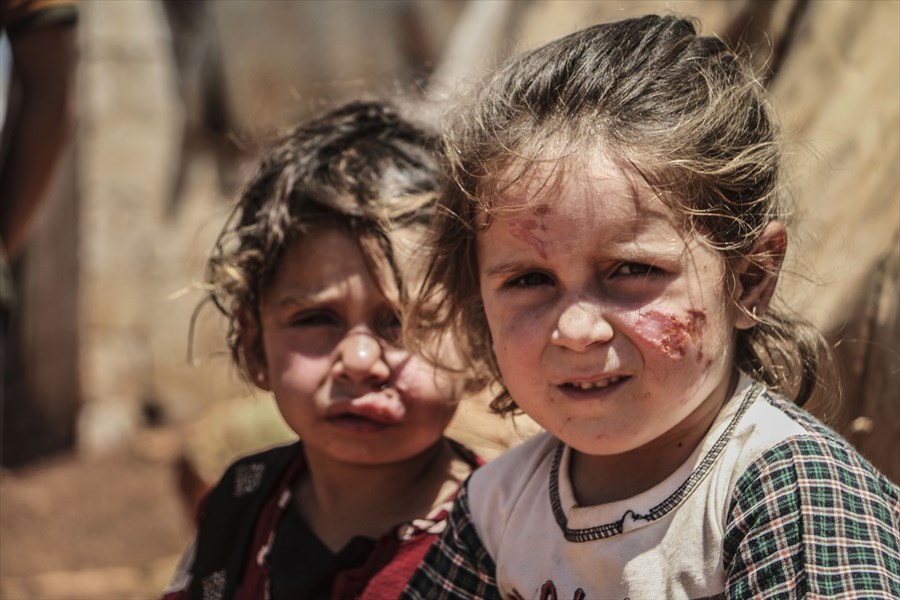Tue 07 July 2020:
Syrian children suffering from leishmaniasis, a parasitic disease spread by the bite of phlebotomine sandflies, are seen in a refugee camp.
In the refugee camps in Idlib, danger of leishmaniasis disease arose due to inadequate living conditions and insufficient health services.
In the camps where sheltered civilians escaping from the attacks of Assad regime and its supporters, infrastructure problems, especially exposed septic pits and damaged sewers, cause the spread of the disease.
Giardiasis has been detected in Syrian refugees and can be associated with subtle symptoms such as abdominal complaints, loose stool, flatulence, and eructation. Giardiasis has been associated with failure to thrive in children.
Leishmaniasis is caused by infection with Leishmania parasites, which are spread by the bite of phlebotomine sand flies. Leishmaniasis is endemic to Syria. There are several different forms of leishmaniasis in people.
The most common forms are cutaneous leishmaniasis, which causes skin sores, and visceral leishmaniasis, which affects several internal organs (usually spleen, liver, and bone marrow). Cutaneous leishmaniasis is the most common form of the disease observed in Syrian refugees.
L. tropica and L. major have been reported in Syrian refugees in Lebanon. In 2013, 1,033 new cases of leishmaniasis were reported in Lebanon, with approximately 97% of cases occurring in Syrian refugees. Cutaneous leishmaniasis has also been reported in refugees in Turkey, as well as in Syrian refugees screened at a GeoSentinel site in Berlin, Germany.
Muhammed Abdullah (Anadolu Agency)
Think your friends would be interested? Share this story!





